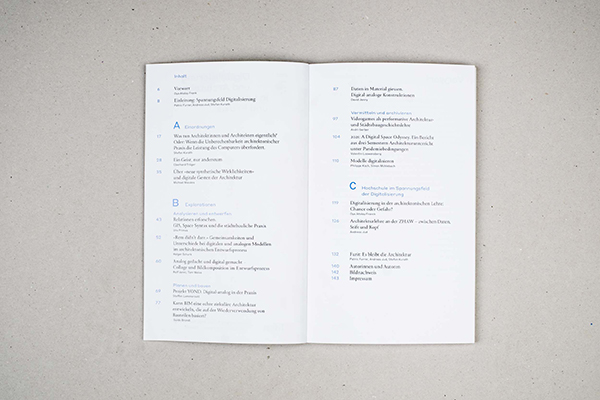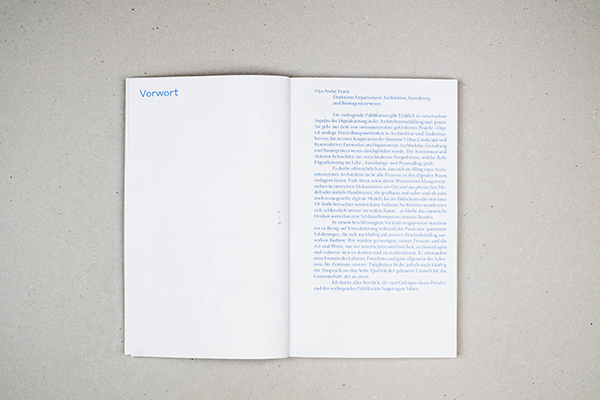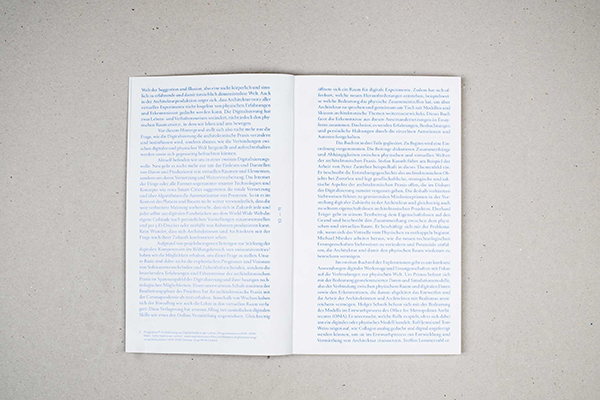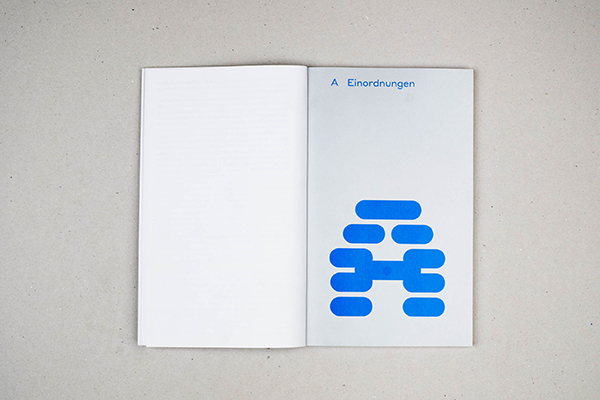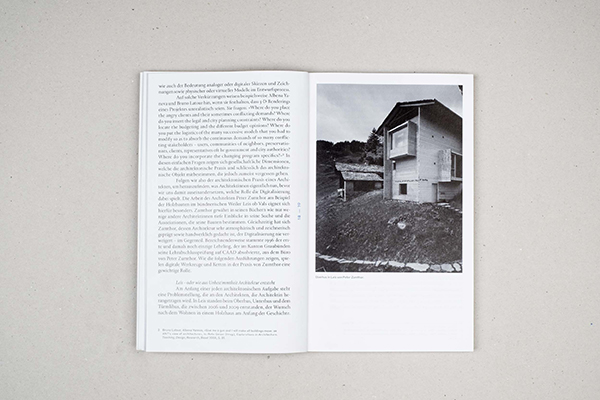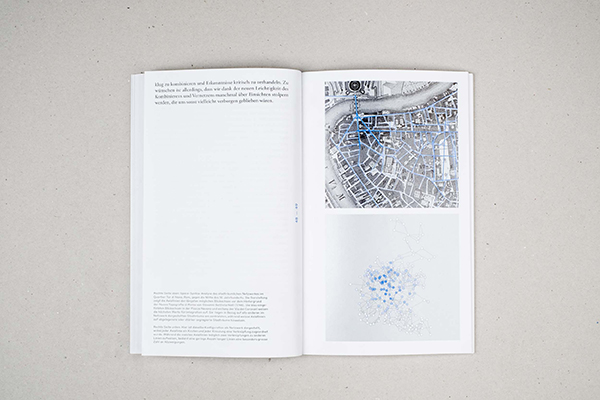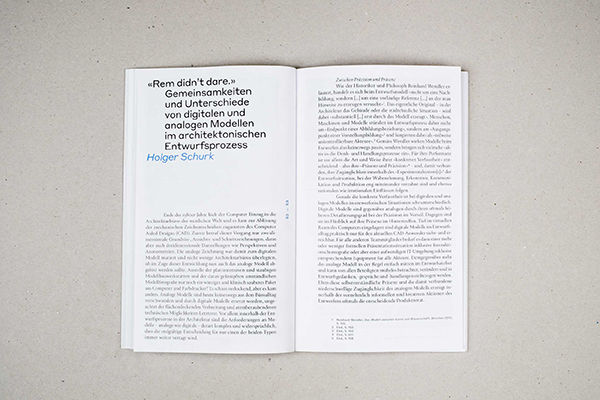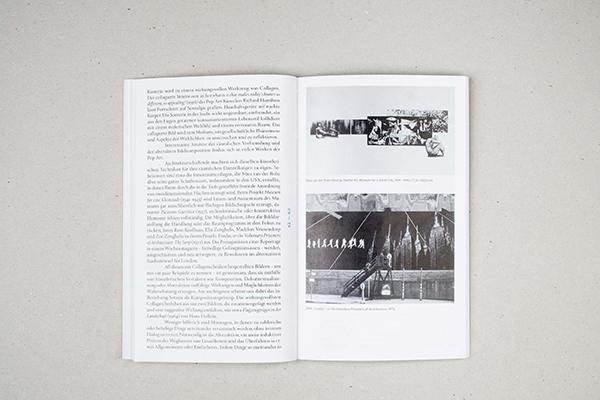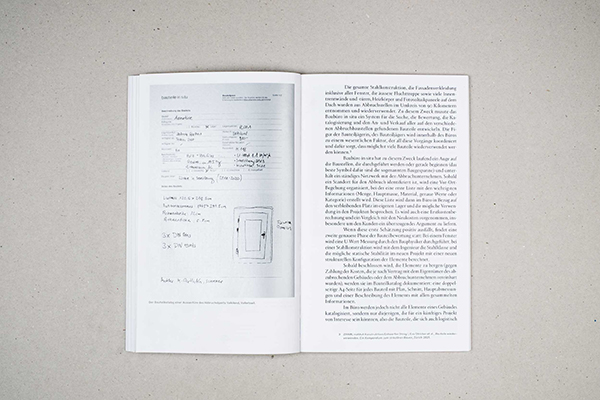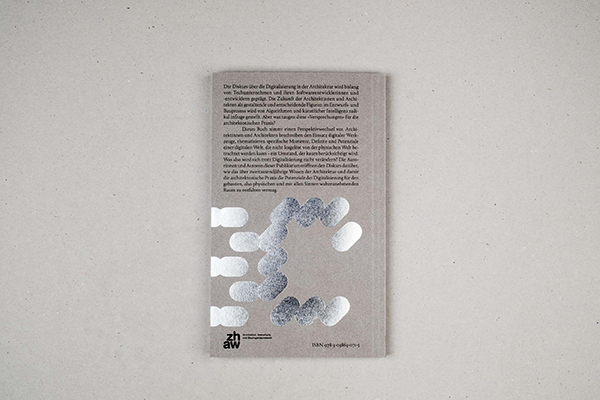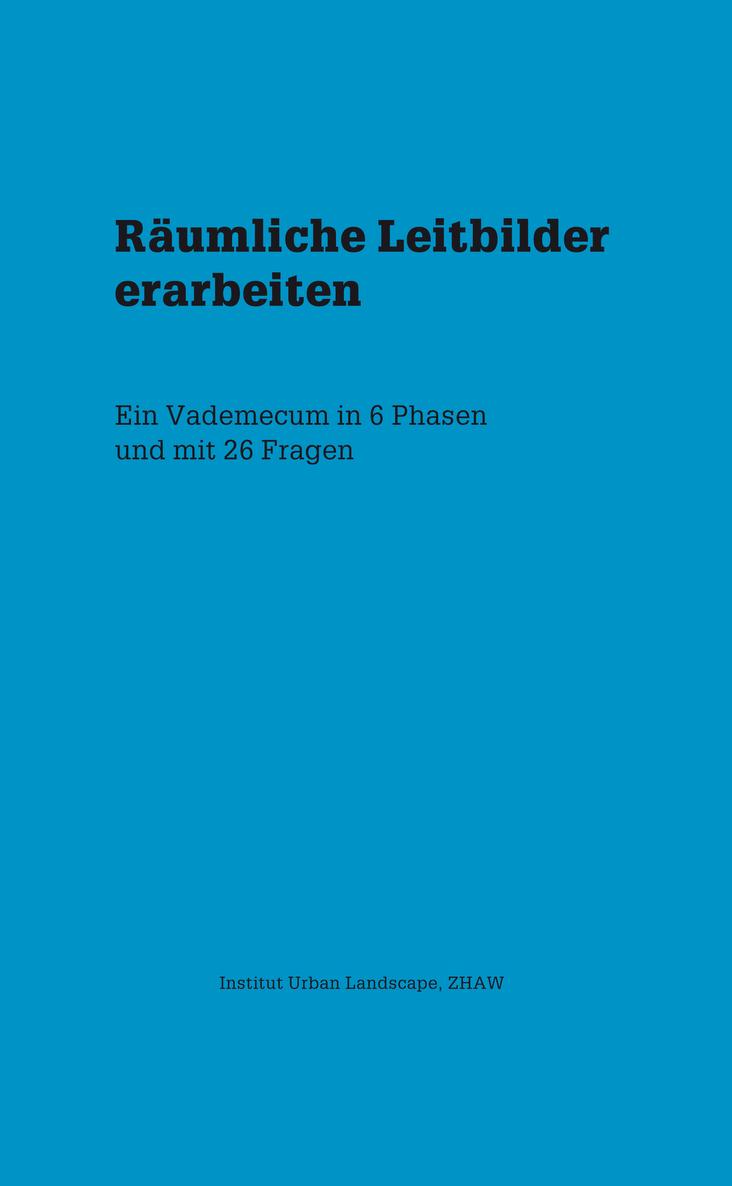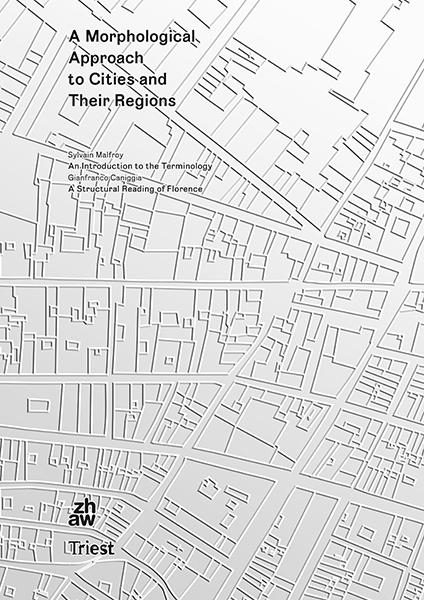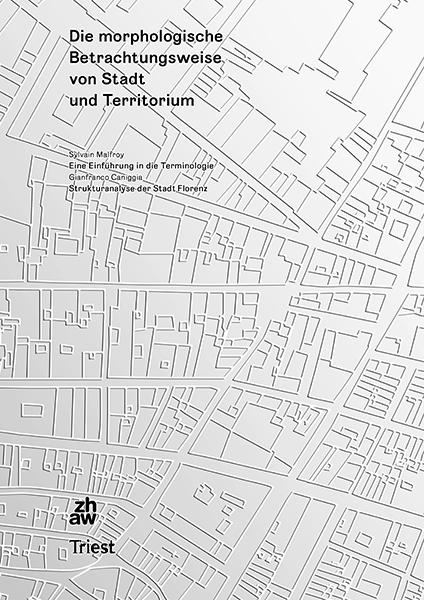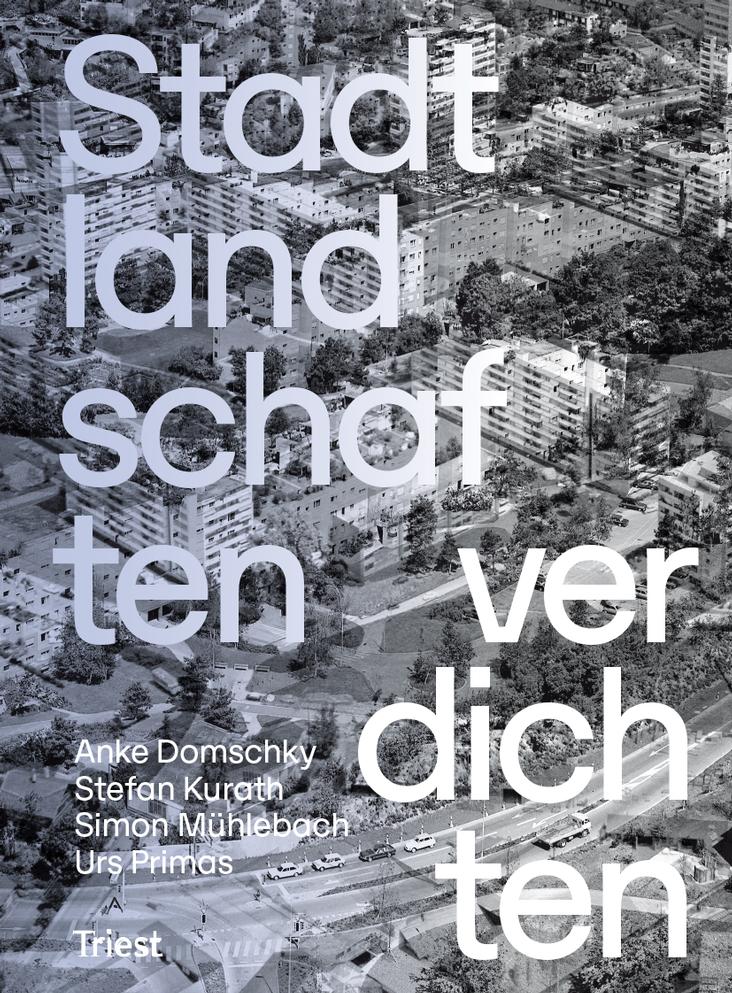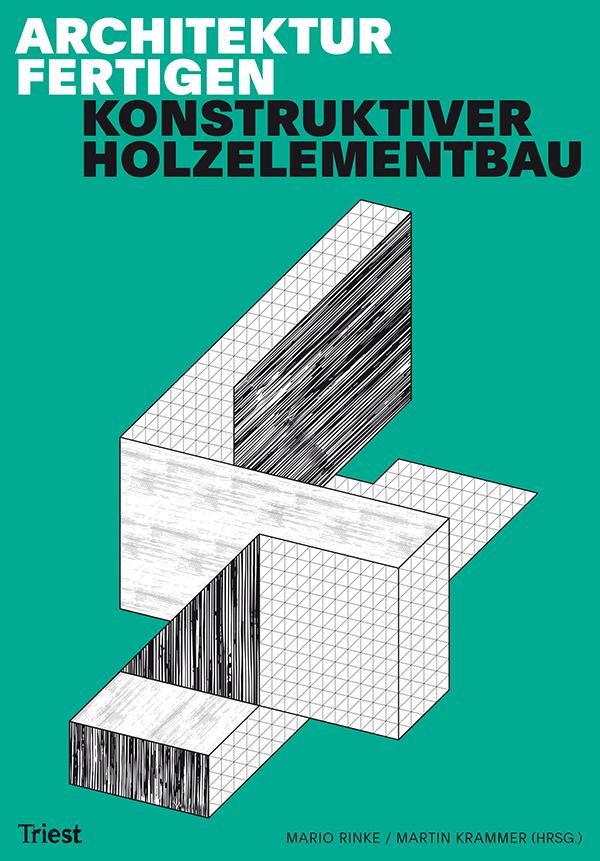ZHAW – Patric Furrer, Andreas Jud, Stefan Kurath (eds.)
Digitalisierung und Architektur in Lehre und Praxis
Book design: Resort, Zurich
Euro [D] 39.–, Euro [A] 40.–
ISBN
978-3-03863-071-5
→ Connections and dependencies between the physical and virtual world in teaching and practice, including an analysis of digitization in teaching
→ Specific examples of digital tools, including BIM, GIS, space syntax, 3D modeling, virtual reality, augmented reality, Zoom, etc.
We are currently in the middle of a second wave of digitization that is affecting both our everyday and our working lives. This is also the case for architecture. Today, however, we are no longer simply talking about uploading and displaying data or creating virtual rooms and objects, but rather about available options for linking and further processing them. Designations such as the “Internet of Things” along with smart technologies and, based on them, concepts like Smart Cities suggest a total networking of objects, spaces and people using algorithms. The connections between our physical and digital worlds are becoming more diverse and complex.
What does this mean for architecture, building and architecture education? Which digital tools and programs are used and how do they facilitate planning, executing and designing our physical environment?
This book aims to highlight findings on the development of architectural ideas and their translation into the built environment in the context of digitization. It shows how architects work today and what characterizes contemporary architectural practice.
Against this background, the contributing authors no longer ask how digitization will change and influence architectural practice, but rather how the connections between the digital and physical world can be maintained or even used to stimulate each other. This interpretation helps to add a necessary portion of realism to the current discourse on digitization and its effects on architectural practice.
With contributions by: Oya Atalay Franck, Guido Brandi, Patric Furrer, Andri Gerber, Rolf Jenni, David Jenny, Andreas Jud, Philippe Koch, Stefan Kurath, Steffen Lemmerzahl, Valentin Loewensberg, Michael Mieskes, Simon Mühlebach, Holger Schurk, Eberhard Tröger, Urs Primas, Tom Weiss
About the Editors
Patric Furrer (born 1980) is an architect and a lecturer at the Institut Konstruktives Entwerfen (IKE) of Zurich University of Applied Sciences ZHAW.
Andreas Jud (born 1981) is an architect and research assistant at the Institut Urban Landscape (IUL) of Zurich University of Applied Sciences ZHAW.
Together, they run the architectural office Furrer Jud Architects in Zurich.
Stefan Kurath (born 1976) works as an architect and urbanist from his office in Zurich and Grisons and serves as Head of the Institut Urban Landscape at the School of Architecture, Design and Civil Engineering of Zurich University of Applied Sciences together with Regula Iseli.
He thinks, writes, researches and teaches on the subject of urban landscapes and practical architecture.
Andreas Jud (born 1981) is an architect and research assistant at the Institut Urban Landscape (IUL) of Zurich University of Applied Sciences ZHAW.
Together, they run the architectural office Furrer Jud Architects in Zurich.
He thinks, writes, researches and teaches on the subject of urban landscapes and practical architecture.
DOWNLOAD Cover Digitalisierung und Architektur ›
DOWNLOAD Waschzettel Digitalisierung und Architektur ›

